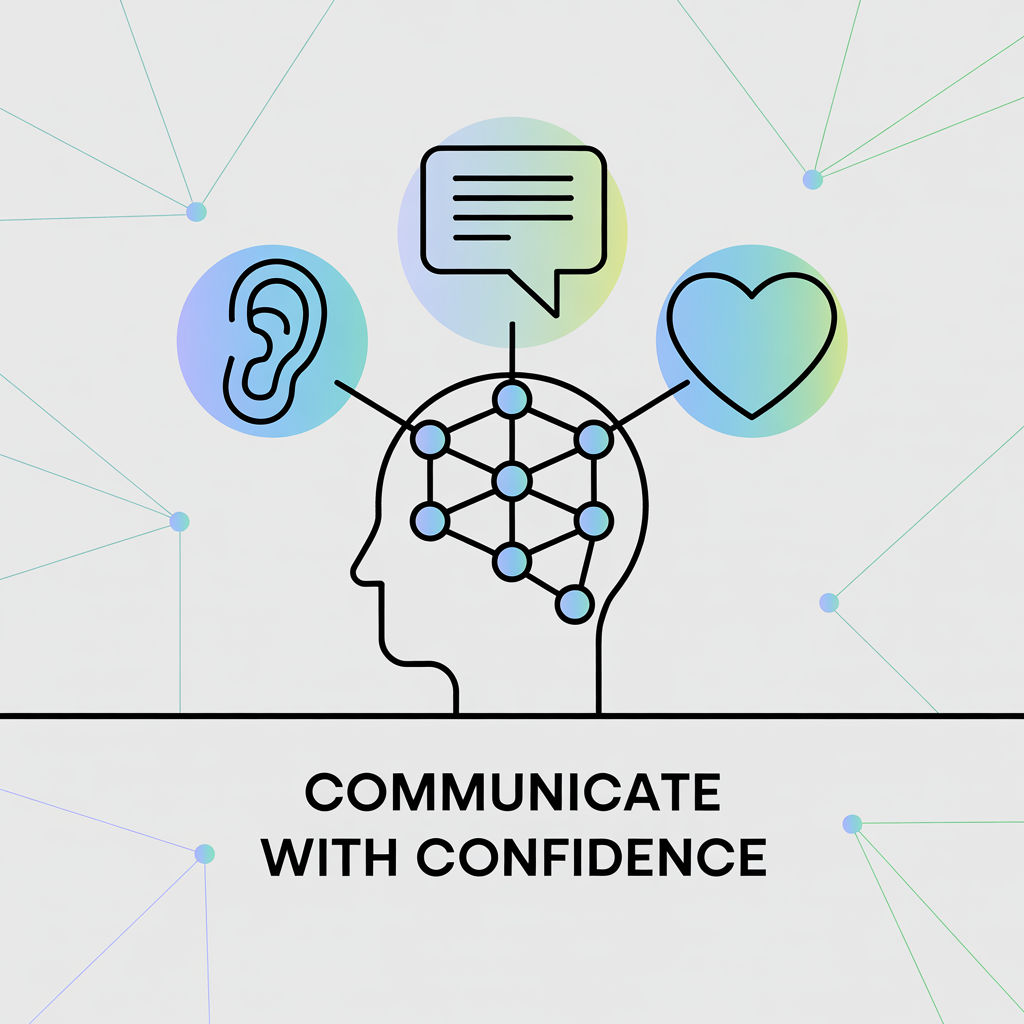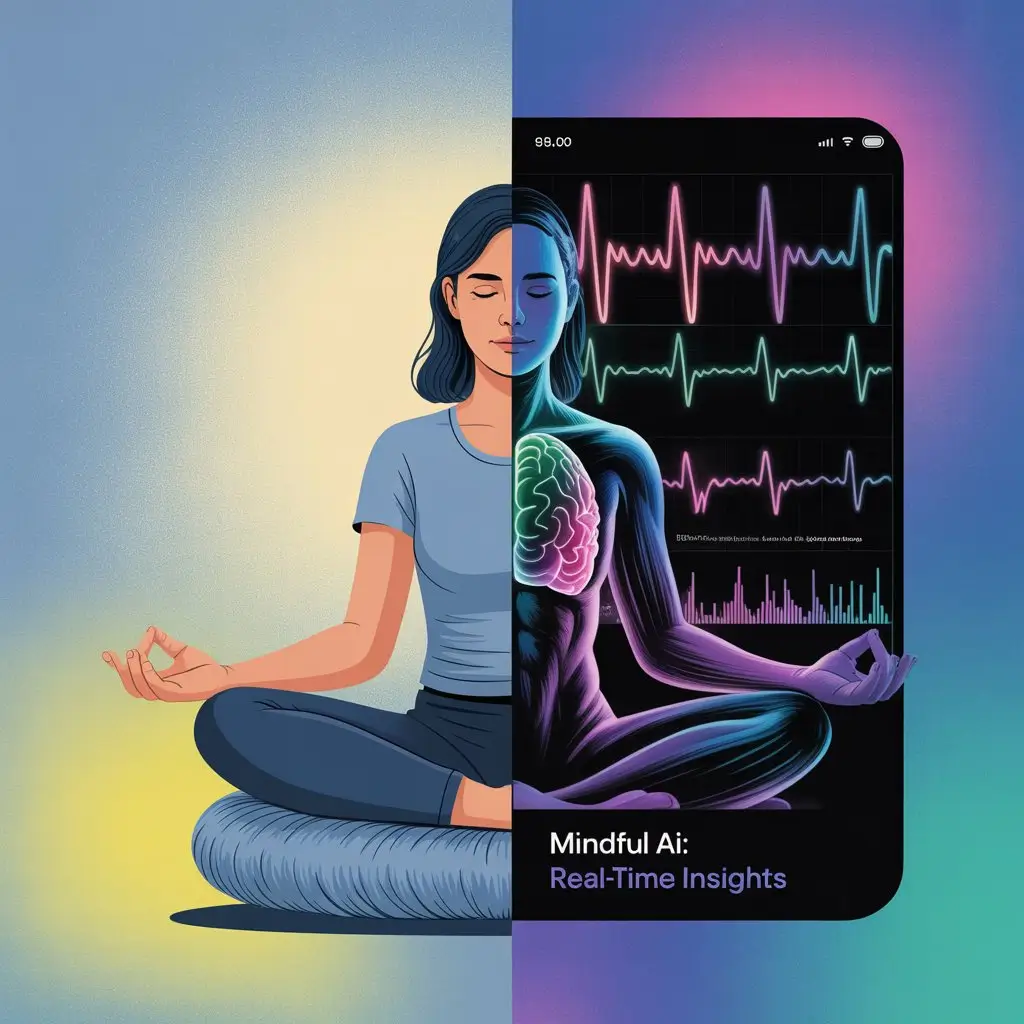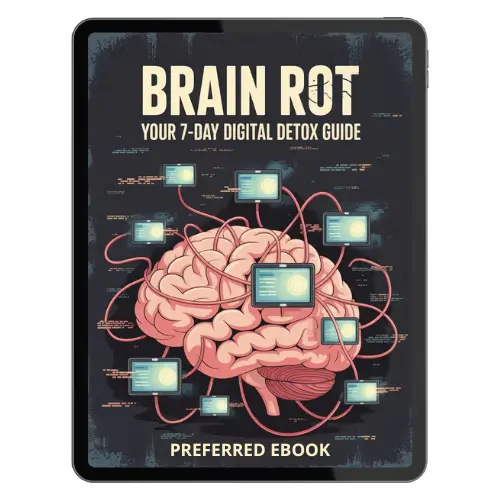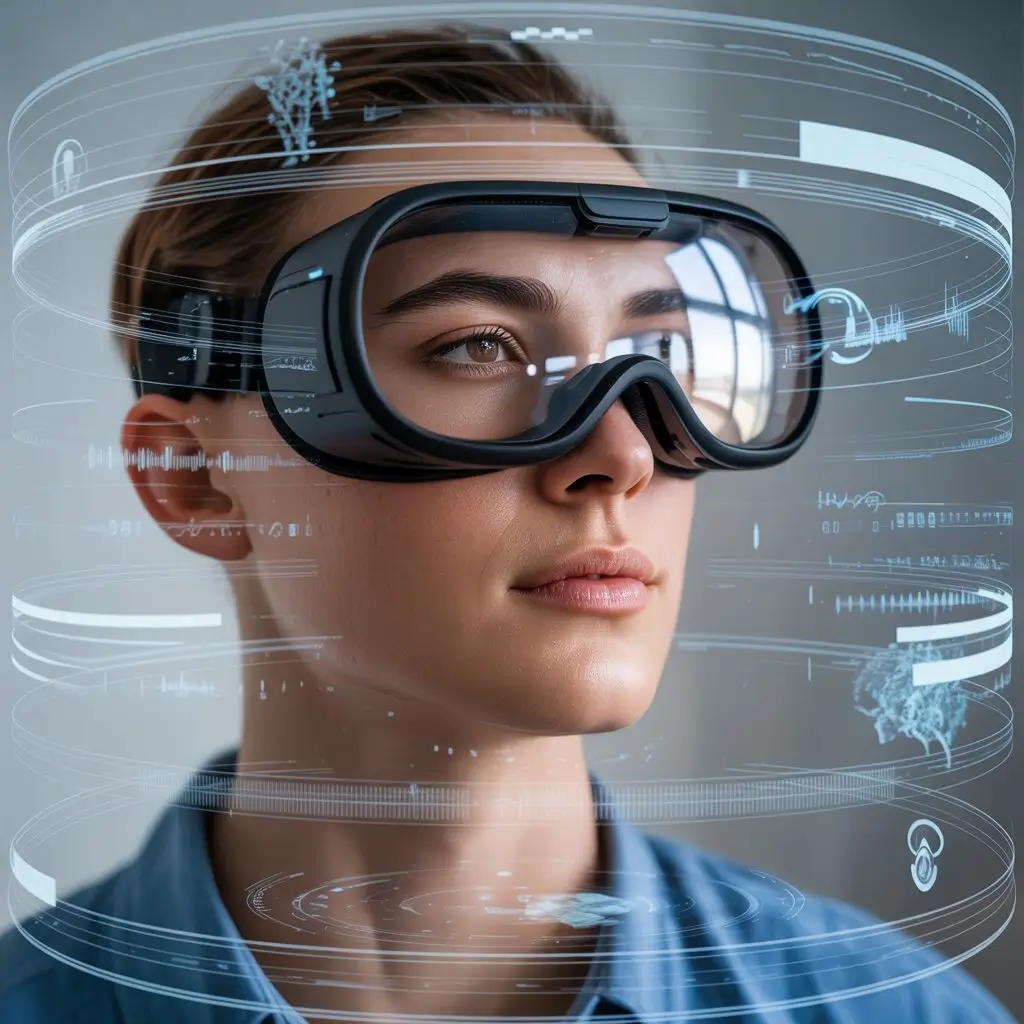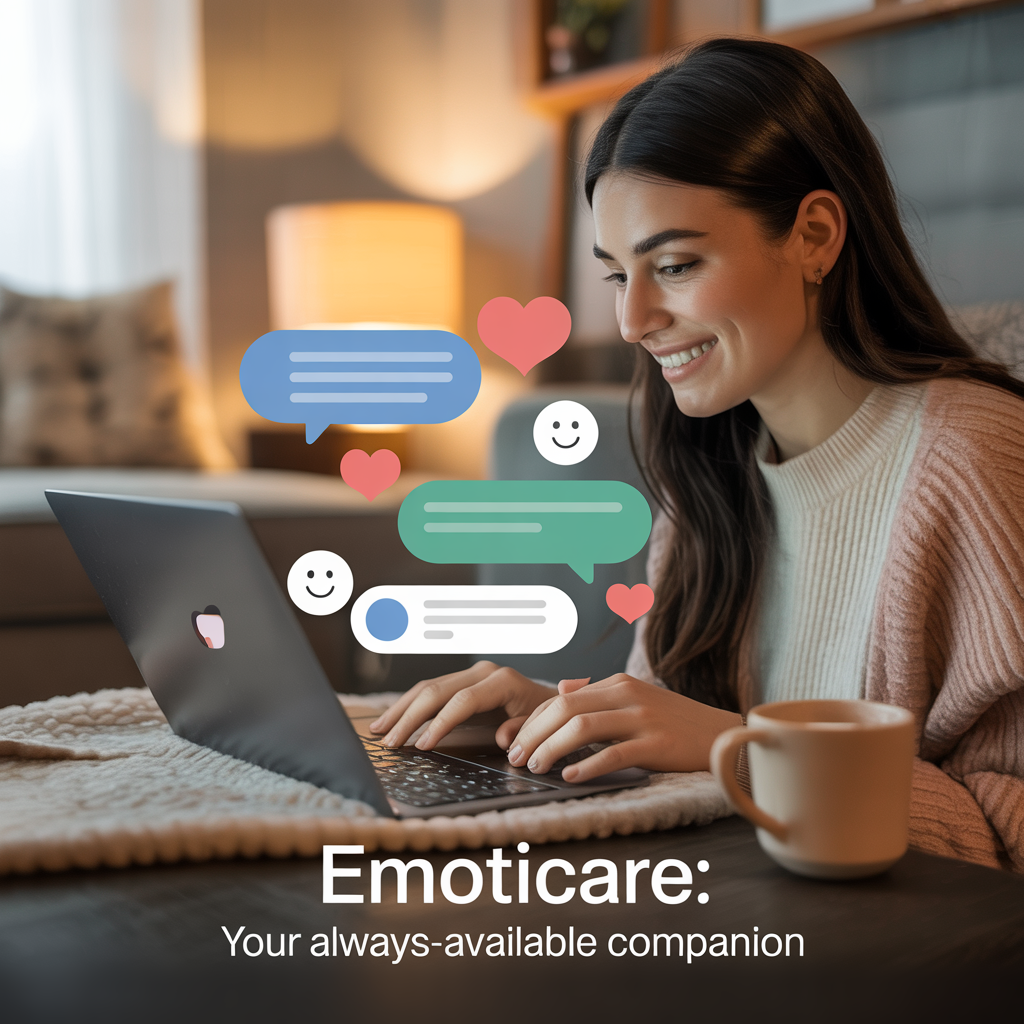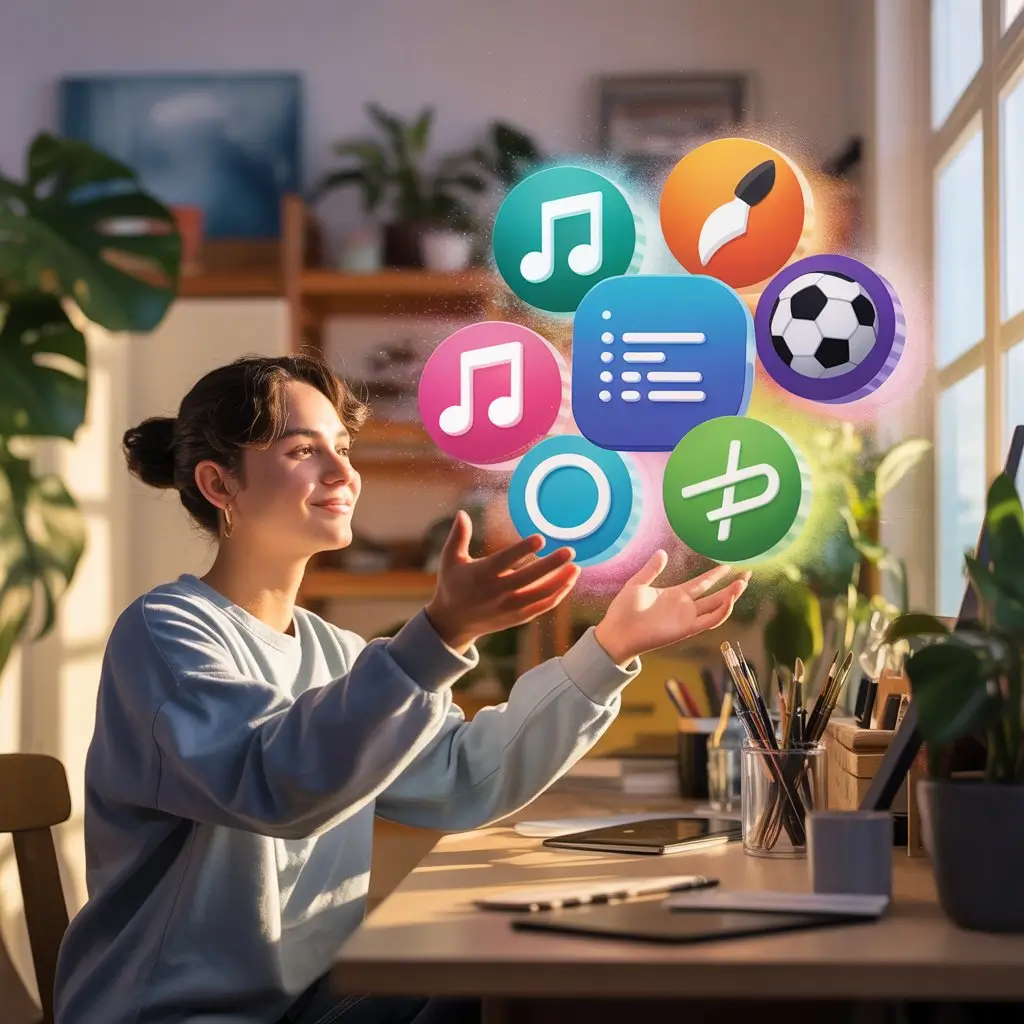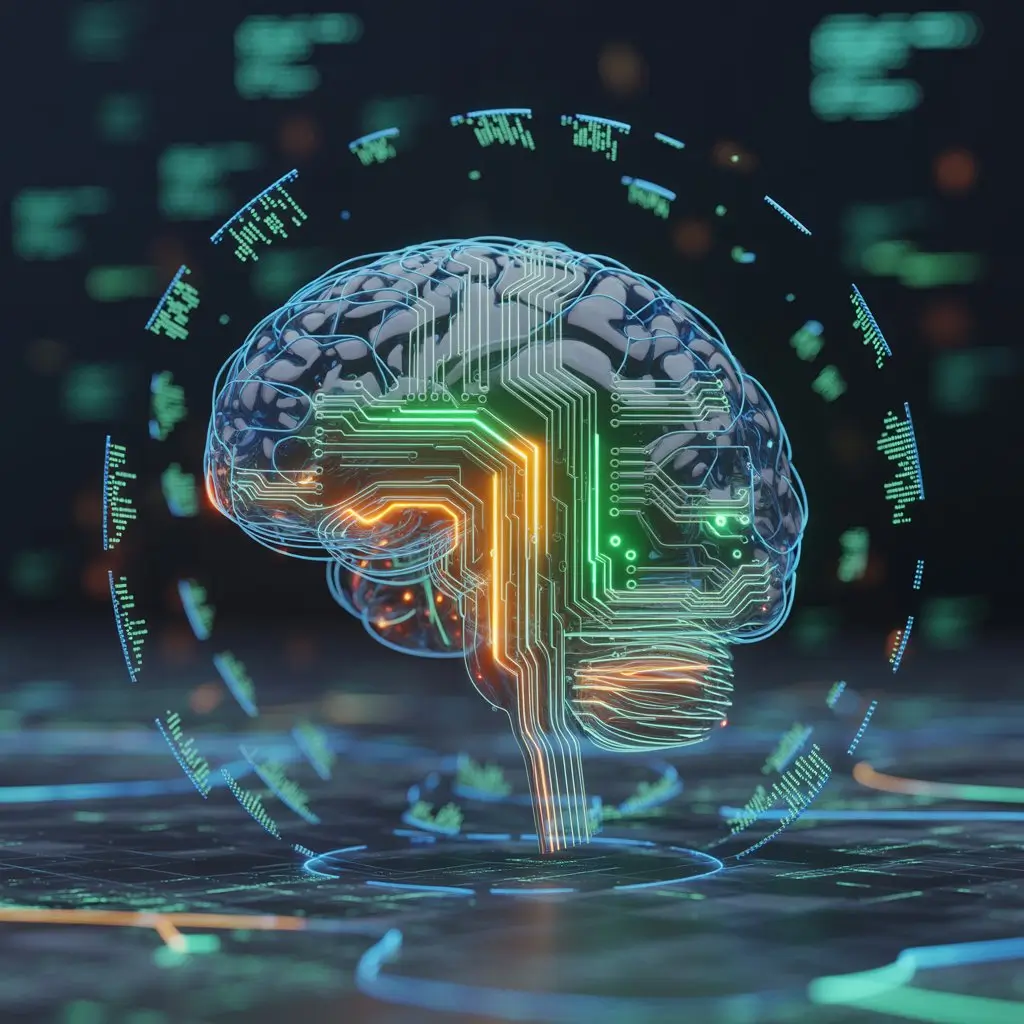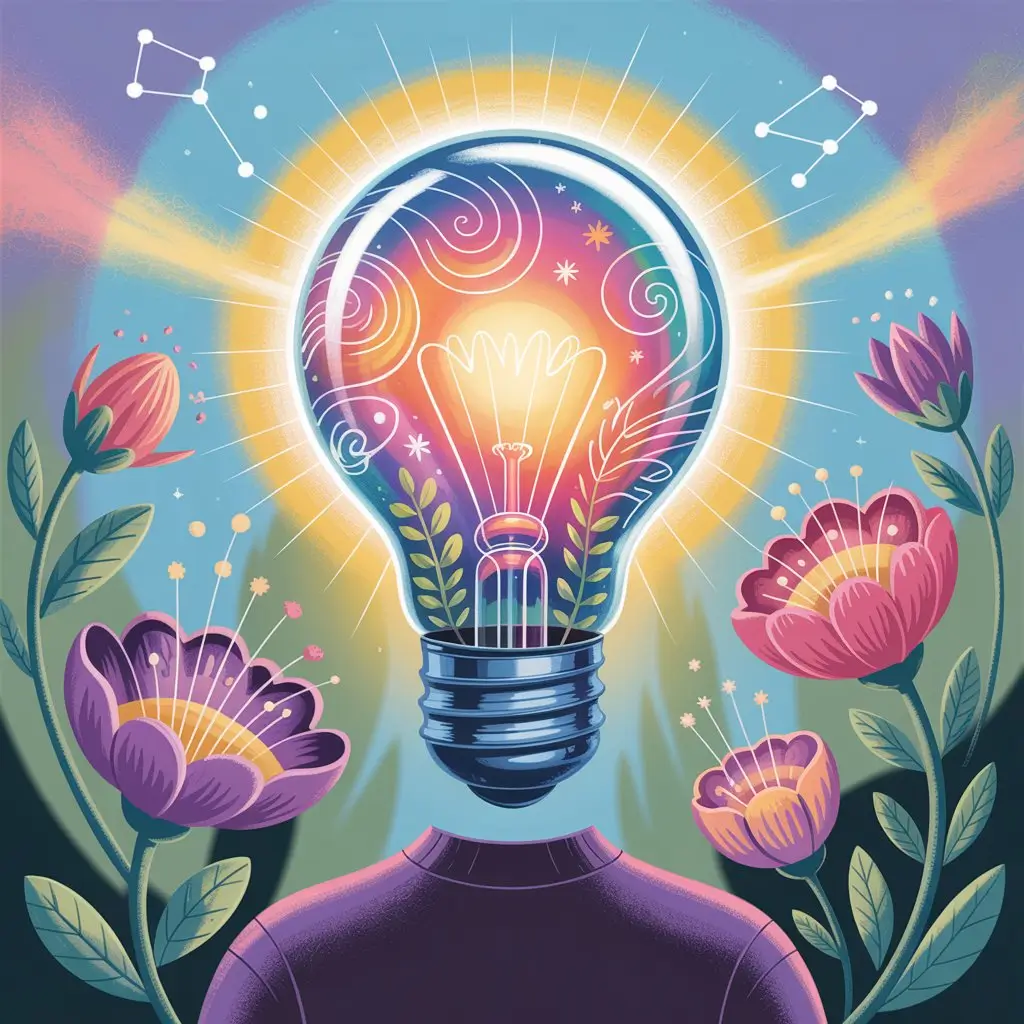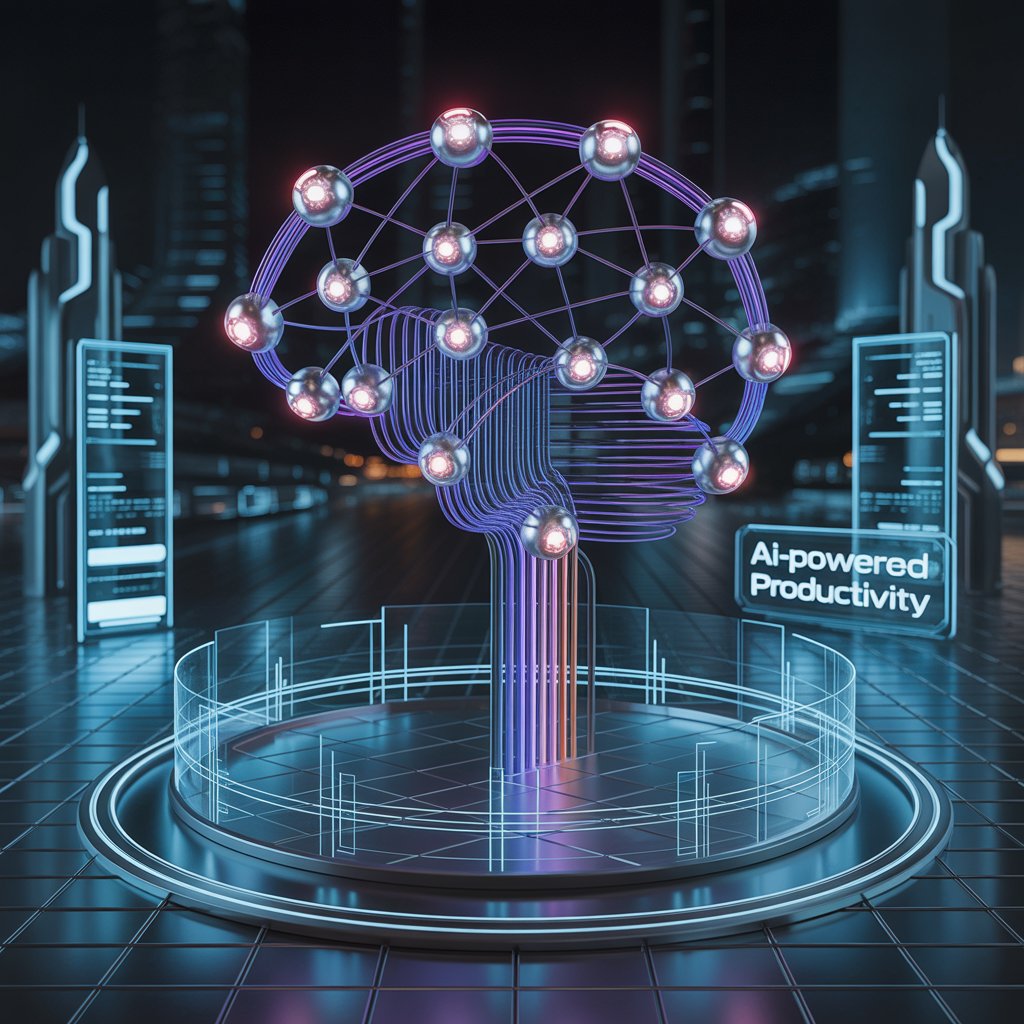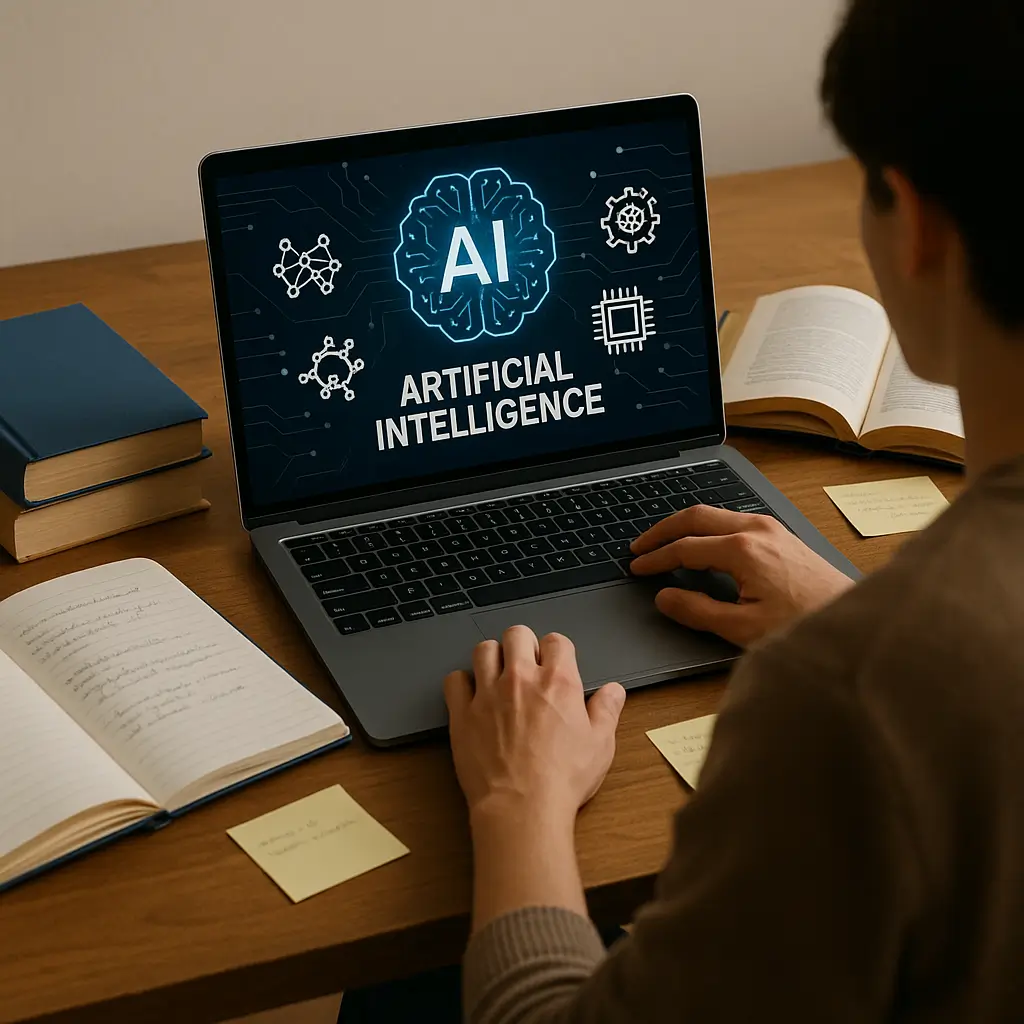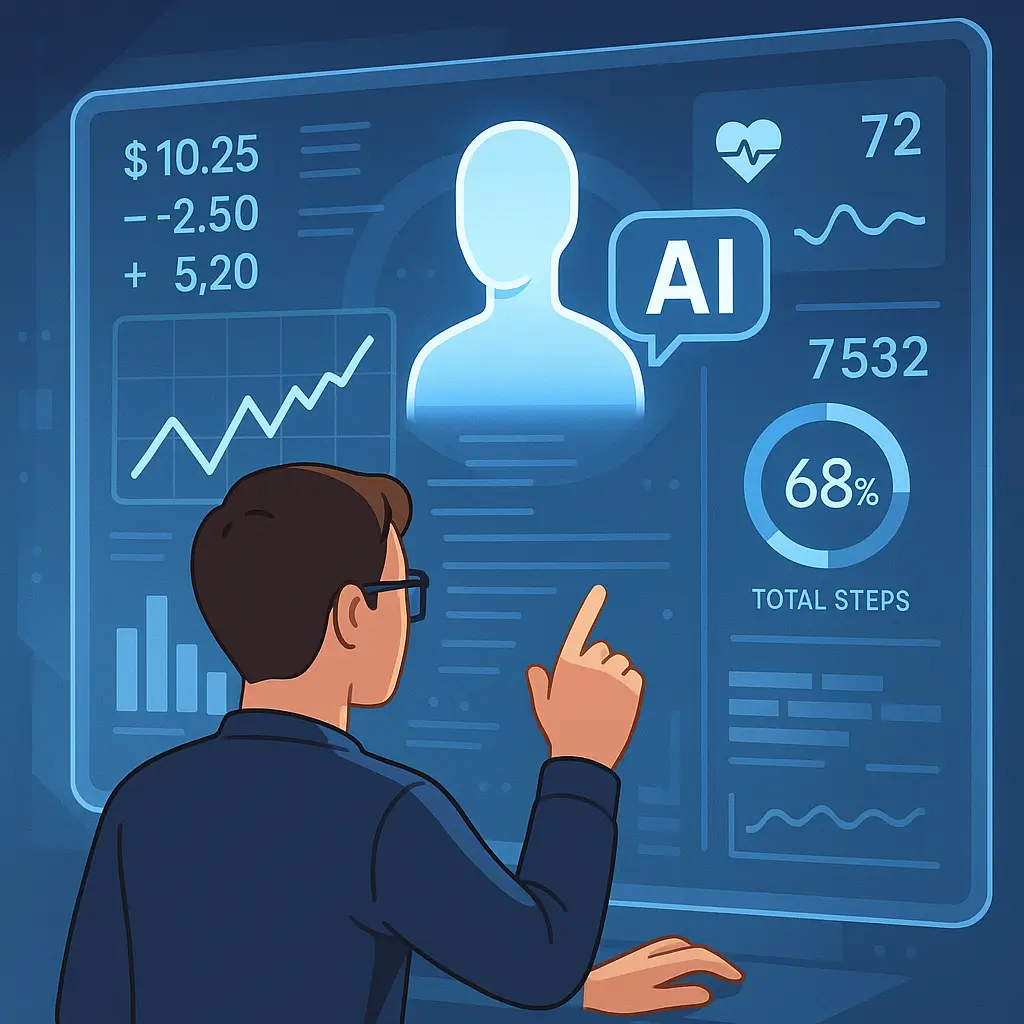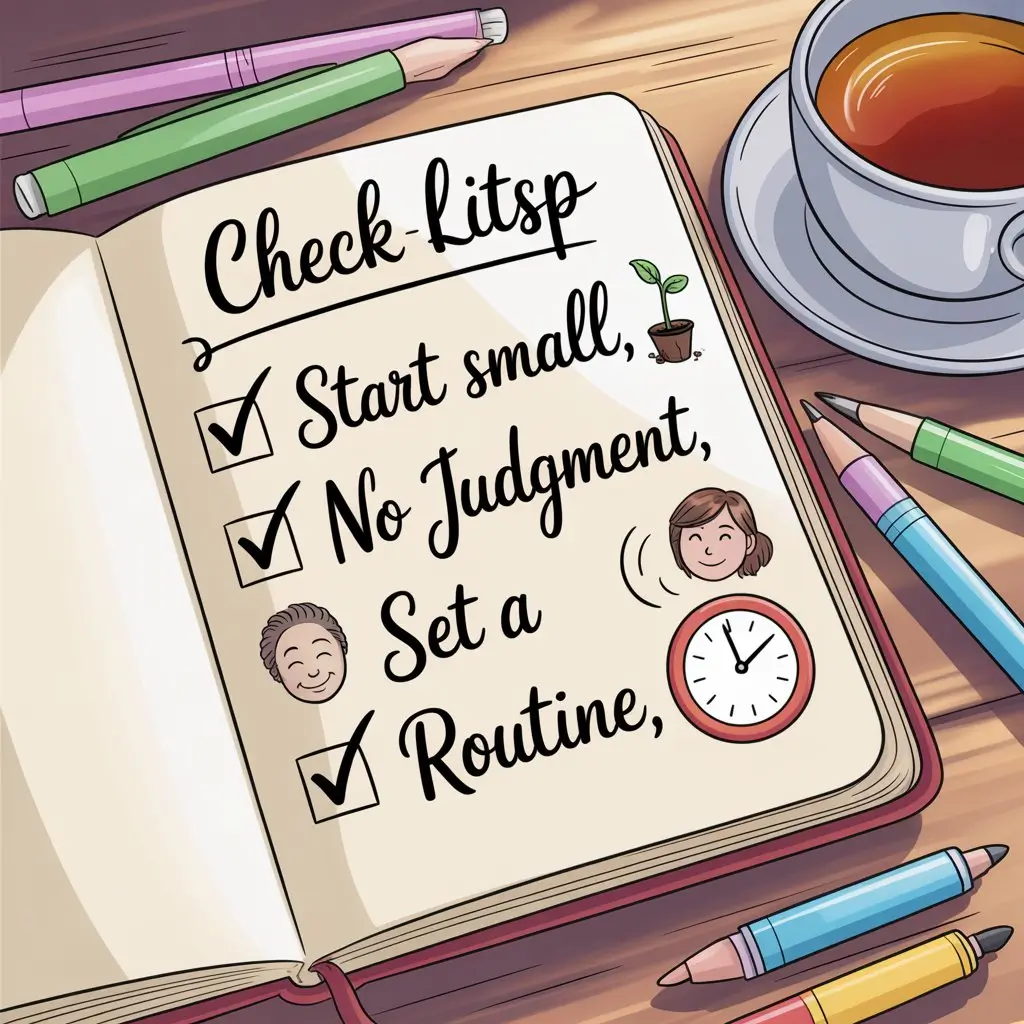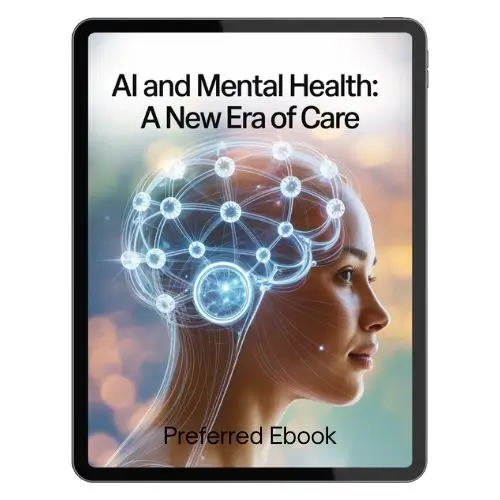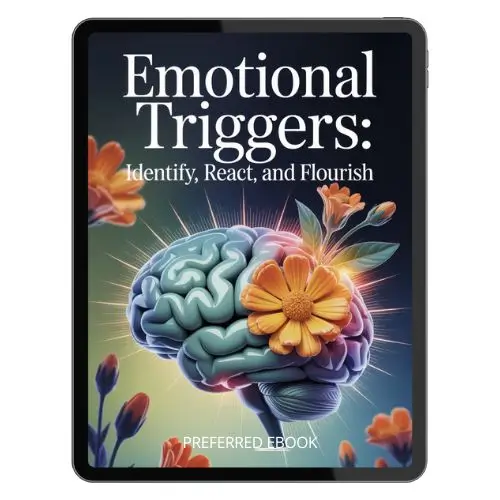INDEX
Introduction
- Overview of AI in Mental Health
- Importance of Ethical Considerations
Chapter 1: Understanding AI in Mental Health
- Introduction to AI and Machine Learning
- Current Applications in Mental Health
- Chatbots and Virtual Therapists
- Predictive Analytics
- Sentiment Analysis
- Personalized Treatment Plans
- Teletherapy Enhancements
- Case Studies
- Woebot
- IBM Watson
- SilverCloud Health
Chapter 2: Ethical Frameworks for AI in Mental Health
- Overview of Ethical Theories
- Utilitarianism
- Deontology
- Virtue Ethics
- Existing Ethical Guidelines for AI
- Transparency
- Fairness
- Informed Consent
- Data Privacy
- Responsibility
- Importance of Ethical Frameworks in Mental Health Settings
Chapter 3: The Role of Empathy in Mental Health Care
- Defining Empathy in Therapeutic Contexts
- Cognitive Empathy
- Affective Empathy
- How AI Can Enhance or Diminish Empathy
- Enhancements
- Diminishments
- Balancing AI Interventions with Human Touch
Chapter 4: Privacy and Data Security
- Overview of Data Privacy Concerns
- Confidentiality
- Informed Consent
- Data Ownership
- Data Breaches
- Regulations and Legal Frameworks
- HIPAA
- GDPR
- State-Specific Regulations
- Strategies for Ensuring Patient Data Security
Chapter 5: Human-AI Collaboration in Therapy
- Models of Human-AI Interaction
- Augmented Intelligence Model
- Autonomous AI Model
- Co-Therapy Model
- Best Practices for Integrating AI Tools in Therapy
- Training Mental Health Professionals to Work with AI
Chapter 6: Case Studies of Ethical AI Use
- Analysis of Successful Ethical Implementations
- Woebot Health
- SilverCloud Health
- IBM Watson for Health
- Lessons Learned from Failures
- Facebook’s AI Mental Health Tool
- Recommendations for Future Practices
Chapter 7: Future of AI in Mental Health
- Emerging Technologies and Trends
- Natural Language Processing (NLP)
- Wearable Technology
- Virtual Reality (VR) and Augmented Reality (AR)
- Predictions for AI and Human Collaboration
- Preparing for Future Ethical Challenges
Chapter 8: Conclusion and Recommendations
- Summary of Key Insights
- Actionable Recommendations
- For Mental Health Professionals
- For AI Developers
- For Policymaker
Conclusion
In recent years, integrating artificial intelligence (AI) into various sectors has transformed how we approach everyday challenges, and mental health care is no exception. AI-driven tools and applications are emerging rapidly, offering innovative solutions for diagnosis, therapy, and patient engagement. However, as these technologies proliferate, they raise critical questions about their ethical use and impact on human relationships in therapeutic settings.
This book, “AI and Mental Health: Ethical Use and Human-AI Collaboration,” explores the complexities of integrating AI in mental health care while emphasising the importance of maintaining empathy and preserving patient privacy. As mental health professionals increasingly adopt AI tools, ranging from chatbots to predictive analytics, the need for a comprehensive understanding of ethical frameworks becomes paramount.
In navigating this landscape, we must consider how AI can enhance therapeutic processes without undermining the fundamental human elements that are crucial to mental health care. Empathy, trust, and emotional connection are cornerstones of effective therapy, and their preservation must be a priority as we embrace these technological advancements.
Throughout this book, we will delve into the current applications of AI in mental health, examine ethical frameworks to guide their use, and discuss the vital role of human-AI collaboration. We will also address privacy concerns and legal considerations that arise when handling sensitive patient data. By combining theoretical insights with practical case studies, we aim to provide mental health professionals, researchers, and policymakers with actionable recommendations for ethically integrating AI into their practices.
As we embark on this journey, our goal is to foster a dialogue about the future of mental health care, one that harmonises the benefits of advanced technology with the irreplaceable value of human compassion. The following chapters will serve as a guide for navigating this exciting yet challenging terrain, encouraging a thoughtful approach to harnessing AI in ways that truly benefit both practitioners and patients alike.
Chapter 1: Understanding AI in Mental Health
Introduction to AI and Machine Learning
We can say that artificial intelligence (AI) is when computers are designed to perform operations that require human thinking. These activities include learning, reasoning, and the ability to correct mistakes made along the way. In AI, machine learning is about teaching machines to look at data and determine what to predict.
Current Applications in Mental Health
The application of AI in mental health care is multifaceted, encompassing various innovative tools designed to enhance diagnosis, treatment, and patient engagement. Key applications include:
Chatbots and Virtual Therapists: AI-based chatbots immediately support those who need help with mental health problems. These tools can engage users in conversation, offering coping strategies and resources while maintaining a degree of anonymity.
Predictive Analytics: Machine learning algorithms can analyse large datasets to identify patterns and predict mental health issues before they escalate. This way of thinking ahead can help people get help sooner and have better results.
Sentiment Analysis: AI can assess language used in social media posts, texts, or therapy sessions to gauge emotional states. By doing this analysis, clinicians can monitor a patient’s mood and mental health as time progresses.
Personalised Treatment Plans: By analysing individual patient data, AI can suggest tailored treatment plans that align with specific needs, improving the efficacy of interventions.
Teletherapy Enhancements: AI tools can assist therapists during virtual sessions by providing real-time feedback, tracking patient progress, and suggesting therapeutic techniques based on session data.
Case Studies: Successful Implementations
1. Woebot
Woebot works as an AI chatbot, helping people with their mental health through simple conversations. Studies have shown that users of Woebot report decreased anxiety and depression levels, highlighting the potential of AI to augment traditional therapeutic methods. By leveraging cognitive-behavioural therapy (CBT) principles, Woebot engages users in evidence-based techniques, making mental health care more accessible.
2. IBM Watson
IBM Watson has been utilised in various healthcare settings, including mental health. By analysing vast amounts of data, Watson assists clinicians in identifying effective treatment options for patients with complex mental health conditions. Its efficiency at working with big data has helped create personal treatment plans and enhance prospects for patient recovery.
3. SilverCloud Health
SilverCloud offers an online platform that provides evidence-based mental health programs through AI-driven assessments. Users can engage with interactive modules that focus on issues like anxiety, depression, and stress. Research indicates that participants in SilverCloud programs experience significant improvements in their mental health, demonstrating the efficacy of technology in supporting therapeutic processes.
Chapter 2: Ethical Frameworks for AI in Mental Health
Overview of Ethical Theories
As AI technologies increasingly influence mental health care, it is essential to ground their use in robust ethical frameworks. Various ethical theories provide a foundation for evaluating the implications of AI in this sensitive field:
Utilitarianism: The idea behind this theory is to decide on an action that gives the greatest benefit to everyone’s happiness. With regard to AI, utilitarianism encourages the development of tools that offer the highest quality care to a wide group of people.
Deontology: Deontological ethics focuses on the morality of actions themselves rather than their consequences. This approach emphasises adherence to duties and rights, such as maintaining patient confidentiality and informed consent when using AI tools.
Virtue Ethics: This framework centres on the character and virtues of the individuals involved. In mental health care, it emphasises the importance of empathy, compassion, and integrity, encouraging AI developers and practitioners to cultivate these traits in their interactions with patients.
Existing Ethical Guidelines for AI
Several organisations and institutions have established ethical guidelines for the use of AI in healthcare, including mental health. Key principles often include:
Transparency: It is important for AI systems to provide transparency into the process of decision-making. This fosters trust and accountability.
Fairness: AI must be designed to avoid biases that could lead to unequal treatment of patients based on race, gender, or socioeconomic status.
Informed Consent: Patients should be fully informed about how AI tools will be used in their care, including the potential risks and benefits.
Data Privacy: Safeguarding patient data is paramount. Ethical guidelines stress the importance of protecting sensitive information from unauthorised access and misuse.
Responsibility: Developers and practitioners must take responsibility for the outcomes of AI applications, ensuring that they align with ethical standards and promote patient welfare.
Importance of Ethical Frameworks in Mental Health Settings
The dynamic nature of mental health care, combined with the complexities of AI technologies, necessitates a strong ethical foundation. Ethical frameworks serve several crucial functions:
Guiding Decision-Making: They provide a structured approach for mental health professionals to navigate dilemmas involving AI, helping them to align their practices with ethical principles.
Protecting Patients: By adhering to ethical standards, practitioners can better protect patients’ rights and well-being, ensuring that AI tools enhance rather than diminish care quality.
Building Trust: Ethical frameworks foster trust between patients and practitioners. When patients feel confident that their care is guided by ethical principles, they are more likely to engage openly in the therapeutic process.
Promoting Accountability: Establishing clear ethical guidelines holds both developers and practitioners accountable for the use of AI in mental health, ensuring that technologies are employed responsibly and with consideration for potential consequences.
Chapter 3: The Role of Empathy in Mental Health Care
Defining Empathy in Therapeutic Contexts
Effective mental health care relies on empathy, which means being able to share and understand what someone else goes through. In therapeutic contexts, empathy involves not only recognising a patient’s emotional state but also responding with compassion and understanding. This relational dynamic fosters trust and safety, essential components for successful therapeutic outcomes.
Empathy can be categorised into two primary types:
Cognitive Empathy: Being able to see the world from another person’s point of view. It allows therapists to grasp the emotional experiences of their patients, facilitating deeper connections.
Affective Empathy: Being able to feel the same emotions as another person. This type of empathy is crucial for creating a supportive environment where patients feel heard and validated.
How AI Can Enhance or Diminish Empathy
The advent of AI tools in mental health care presents both opportunities and challenges regarding empathy:
Enhancements
Accessibility of Resources: AI-driven chatbots and applications can provide immediate support, making mental health resources more accessible to individuals who may hesitate to seek traditional therapy.
Data-Driven Insights: AI can analyse patient data to identify emotional patterns, enabling therapists to better understand their patients’ needs and tailor interventions accordingly.
Supplementing Human Interaction: AI can provide supplementary resources, such as self-help tools and coping strategies, allowing therapists to focus more on the emotional aspects of care during sessions.
Diminishments
Lack of Human Connection: AI tools, while beneficial, may lack the nuanced understanding and emotional connection that human therapists provide. Over-reliance on technology can lead to a sterile therapeutic experience.
Misinterpretation of Emotions: AI algorithms may struggle to accurately interpret complex emotional states, potentially leading to inappropriate or ineffective responses.
Reduced Therapeutic Alliance: The therapeutic alliance, built on trust and empathy, may be weakened if patients feel they are interacting with a machine rather than a human being.
Balancing AI Interventions with Human Touch
To effectively integrate AI into mental health care while preserving empathy, a balanced approach is essential. Here are key strategies:
Complementary Use: AI should serve as a complementary tool rather than a replacement for human therapists. Combining AI resources with human interaction can enhance the therapeutic experience.
Training for Practitioners: Mental health professionals must be trained not only in using AI tools but also in maintaining empathy and emotional connection during sessions that involve technology.
Patient-Centred Design: Developing AI tools with a focus on user experience can help ensure that they are empathetic in their interactions. Incorporating feedback from patients can enhance the emotional sensitivity of these technologies.
Continuous Evaluation: Regularly assessing the impact of AI tools on therapeutic relationships and patient outcomes is vital. Feedback from both therapists and patients can guide improvements and ensure that empathy remains a priority.
Chapter 4: Privacy and Data Security
Overview of Data Privacy Concerns
The integration of AI in mental health care raises significant concerns regarding data privacy and security. Mental health professionals handle sensitive patient information that, if compromised, could have devastating consequences for individuals. It is crucial to consider how AI technologies process and protect this data to maintain trust and comply with ethical standards.
Key privacy concerns include:
Confidentiality: Patients expect their personal information to be kept confidential. Any breach can lead to stigma and reluctance to seek help.
Informed Consent: Patients must understand how their data will be used, including any AI applications involved in their care. Ensuring informed consent is essential for ethical practice.
Data Ownership: Questions arise about who owns patient data and how it can be shared or sold. There should be set policies to ensure that patients’ rights are not threatened.
Data Breaches: The risk of cyberattacks increases with the use of digital tools. Mental health organizations must be prepared to address potential breaches and protect sensitive information.
Regulations and Legal Frameworks
Several regulations govern data privacy in mental health care, providing a framework for ethical practices:
HIPAA (Health Insurance Portability and Accountability Act): In the United States, HIPAA sets standards for protecting patient health information. It mandates that mental health providers implement safeguards to ensure confidentiality and security.
GDPR (General Data Protection Regulation): In the European Union, GDPR provides comprehensive guidelines on data protection and privacy. It emphasizes the rights of individuals regarding their personal data and requires explicit consent for data processing.
State-Specific Regulations: Various states have additional laws governing mental health data, often providing further protections beyond federal regulations.
Strategies for Ensuring Patient Data Security
To navigate the complexities of data privacy in the context of AI, mental health professionals should adopt the following strategies:
Implement Robust Security Measures: Organizations must invest in secure technologies, including encryption, secure servers, and regular security audits, to protect patient data from breaches.
Develop Clear Privacy Policies: Establishing transparent policies regarding data collection, usage, and sharing ensures that patients are informed about how their information is handled.
Train Staff on Data Security: Continuous training for mental health professionals and administrative staff on best practices for data security can help prevent inadvertent breaches.
Obtain Informed Consent: Clearly communicate to patients how their data will be utilized, especially when AI tools are involved. Patients should have the opportunity to ask questions and opt out if they choose.
Conduct Regular Risk Assessments: Organizations should routinely evaluate their data security practices and address vulnerabilities proactively.
Chapter 5: Human-AI Collaboration in Therapy
Models of Human-AI Interaction
As AI technologies become more prevalent in mental health care, understanding how to effectively collaborate with these tools is crucial. Several models of human-AI interaction can guide mental health professionals in integrating AI into their practices:
Augmented Intelligence Model: This model emphasises collaboration between human therapists and AI systems, where AI acts as a supportive tool. Therapists leverage AI insights to enhance their understanding of patient needs while maintaining the core therapeutic relationship.
Autonomous AI Model: In this model, AI systems operate independently to provide therapeutic interventions. While this approach can increase accessibility, it raises concerns about the absence of human oversight and emotional nuance.
Co-Therapy Model: This innovative model involves AI functioning alongside human therapists during sessions. AI can provide real-time data analysis and support, allowing therapists to focus on emotional engagement while the AI handles logistical aspects.
Best Practices for Integrating AI Tools in Therapy
To ensure effective collaboration between human practitioners and AI, several best practices should be followed:
Clear Role Definition: Establishing clear roles for both the therapist and AI tools is essential. Therapists should understand the capabilities and limitations of AI, using it to complement their skills rather than replace them.
Continuous Training: Mental health professionals must receive ongoing training on how to effectively use AI tools. This includes understanding the technology, interpreting AI-generated insights, and integrating them into therapeutic practice.
Patient Involvement: Involving patients in the process of using AI tools can enhance their engagement and comfort. Patients should be informed about how AI will be used in their care, empowering them to participate actively in their treatment.
Feedback Loops: Creating mechanisms for feedback between patients, therapists, and AI systems can improve the effectiveness of AI tools. Regularly assessing the impact of AI on therapy helps refine its use and address any concerns.
Ethical Oversight: Establishing ethical guidelines for the use of AI in therapy is vital. This includes ensuring that AI tools are used responsibly, respecting patient autonomy, and maintaining the therapeutic alliance.
Training Mental Health Professionals to Work with AI
Preparing mental health professionals to effectively collaborate with AI requires a comprehensive training approach:
Technical Training: Clinicians should receive training on the technical aspects of AI tools, including how they function and their data processing capabilities.
Clinical Integration: Training programs should focus on how to integrate AI insights into clinical practice, helping therapists understand when and how to apply AI-generated data in therapy.
Ethical Considerations: Educating professionals about the ethical implications of using AI is essential. This includes discussions on privacy, informed consent, and potential biases in AI algorithms.
Interpersonal Skills: Training should also emphasise the importance of maintaining empathy and emotional connection, ensuring that therapists continue to prioritise human interaction in their practice.
Chapter 6: Case Studies of Ethical AI Use
Analysis of Successful Ethical Implementations
Examining real-world examples of AI in mental health care helps illuminate the ethical considerations and practices that contribute to successful outcomes. This chapter explores notable case studies that highlight effective integration of AI while adhering to ethical standards.
Case Study 1: Woebot Health
Overview: Woebot is an AI-driven chatbot designed to provide mental health support using principles of cognitive-behavioral therapy (CBT). It engages users in conversation, offering them coping strategies and emotional support.
Ethical Considerations:
- Transparency: Woebot clearly communicates its nature as an AI tool, ensuring users understand they are interacting with a chatbot rather than a human therapist.
- Informed Consent: Users are informed about data usage and privacy policies before engaging with the platform, fostering trust.
- Data Security: Woebot implements robust data protection measures, ensuring users’ information is kept confidential.
Outcomes: Studies show that users of Woebot report reductions in anxiety and depression, demonstrating the effectiveness of AI in providing mental health support while maintaining ethical standards.
Case Study 2: SilverCloud Health
Overview: SilverCloud offers an online platform providing evidence-based mental health programs. Users can access interactive modules addressing various issues such as stress, anxiety, and depression.
Ethical Considerations:
- Patient-Centred Design:The platform is designed with user feedback in mind, ensuring that the experience is engaging and sensitive to user needs.
- Privacy Compliance: SilverCloud adheres to GDPR and HIPAA regulations, ensuring that patient data is protected and used responsibly.
Outcomes: Research indicates that participants experience significant improvements in mental health symptoms, highlighting the effectiveness of ethical AI applications in enhancing access to care.
Case Study 3: IBM Watson for Health
Overview: IBM Watson has been utilised in various healthcare settings, including mental health, to analyse patient data and provide clinical decision support.
Ethical Considerations:
- Bias Mitigation: IBM has implemented measures to address potential biases in AI algorithms, ensuring fair treatment across diverse populations.
- Accountability: Watson provides clinicians with insights while maintaining the therapist’s role in decision-making, ensuring that human oversight is prioritised.
Outcomes: The use of Watson has led to more personalised treatment plans, significantly improving patient outcomes while adhering to ethical guidelines.
Lessons Learned from Failures
What works well with AI in mental health services also points out the value of considering morals and ethics.
Case Study 4: Facebook’s AI Mental Health Tool
Overview: A mental health support feature was introduced by Facebook to help people who might need support.
Challenges:
- Privacy Concerns: Users expressed concerns about how their data was being used and whether it would be shared with third parties.
- Lack of Human Oversight: The tool operated without sufficient human intervention, leading to ineffective responses in critical situations.
Outcomes: The backlash from users regarding privacy and effectiveness led to the tool’s underutilization, emphasizing the need for transparent communication and ethical oversight in AI applications.
Recommendations for Future Practices
Adopt Ethical Guidelines: Organisations should develop and adhere to ethical guidelines that prioritise patient welfare, privacy, and informed consent.
Engage Stakeholders: Involving patients, clinicians, and ethicists in the development process ensures that AI tools are designed with diverse perspectives in mind.
Conduct Regular Audits: Continuously evaluating AI applications for ethical compliance and effectiveness can help identify potential issues early on.
Foster a Culture of Transparency: Organisations should prioritise clear communication with users about data usage, the nature of AI tools, and their limitations.
Chapter 7: Future of AI in Mental Health
Emerging Technologies and Trends
At a time of rapid development in mental health, emerging trends and tools are supporting the integration of AI in the field. These advancements promise to enhance the quality of care while also presenting new challenges that require thoughtful consideration.
Natural Language Processing (NLP)
Machines are now able to understand human language thanks to the major role natural language processing plays in today’s AI development. In mental health care, NLP can enhance chatbots and virtual therapists, allowing for more nuanced interactions. As these technologies improve, they can better assess emotional states and provide personalised responses, creating a more engaging therapeutic experience.
Wearable Technology
Wearable devices equipped with AI capabilities can monitor physiological data such as heart rate, sleep patterns, and activity levels. This information can be invaluable in understanding a patient’s mental health and predicting episodes of anxiety or depression. By integrating data from wearables with AI-driven insights, therapists can create more tailored treatment plans.
Virtual Reality (VR) and Augmented Reality (AR)
Therapists are starting to make more use of VR and AR technologies. These immersive experiences can help patients confront fears in a controlled environment, making them powerful tools for exposure therapy. AI can enhance these experiences by adapting scenarios based on the patient’s responses, ensuring a personalised approach.
Predictions for AI and Human Collaboration
The collaboration between AI and human practitioners is expected to evolve significantly in the coming years. Here are some key predictions:
Enhanced Support for Therapists
AI will increasingly serve as a supportive tool for therapists, providing real-time data analysis and insights to inform treatment decisions. This collaboration will allow practitioners to focus more on the emotional aspects of care while relying on AI for logistical support.
Greater Personalization of Treatment
As AI systems become more sophisticated, they will be able to analyse patient data more effectively, leading to highly personalised treatment plans. This level of customisation will enhance therapeutic effectiveness and improve patient engagement.
Ethical Considerations in AI Development
As AI technologies advance, ethical considerations will remain paramount. Developers and mental health professionals ought to join forces to develop standards that ensure AI tools protect patients and maintain the relationship between therapist and patient.
Preparing for Future Ethical Challenges
The intersection of AI and mental health will inevitably bring about new ethical challenges. To address these, mental health professionals and organizations should prioritize the following:
Continuous Education and Training
Ongoing education about emerging technologies and their ethical implications is essential for mental health professionals. Training programs should focus on how to integrate AI responsibly while maintaining empathy and care.
Establishing Ethical Frameworks
Developing robust ethical frameworks that address the unique challenges posed by AI in mental health will be crucial. These frameworks should guide practitioners in navigating dilemmas related to data privacy, informed consent, and the use of AI tools.
Engaging in Collaborative Research
Collaboration between mental health professionals, technologists, and ethicists will be vital in exploring the implications of AI in mental health. Joint research initiatives can help identify best practices and inform the development of ethical guidelines.
Chapter 8: Conclusion and Recommendations
Summary of Key Insights
As we have explored throughout this book, the integration of AI in mental health care presents both exciting opportunities and significant challenges. The rapid advancement of AI technologies has the potential to enhance therapeutic practices, improve patient outcomes, and increase access to mental health support. However, these benefits must be carefully balanced with ethical considerations, ensuring that patient welfare, privacy, and the essential human elements of care are preserved.
We have looked at the ethical frameworks that ought to govern the use of AI technologies, the significance of preserving human connection, and the function of empathy in therapy. Through case studies, we highlighted successful implementations of AI that adhered to ethical standards, as well as cautionary tales that emphasize the need for transparency and responsibility.
Actionable Recommendations for Stakeholders
For Mental Health Professionals
Embrace AI as a Support Tool: Utilise AI technologies to complement your practice, enhancing your ability to provide personalised care while maintaining the core therapeutic relationship.
Invest in Training: Engage in ongoing education about AI tools, their capabilities, and ethical implications. This knowledge will empower you to use technology effectively while prioritising patient welfare.
Prioritise Empathy: Maintain a strong focus on empathy and human connection in your practice, ensuring that technology enhances rather than diminishes the therapeutic experience.
For AI Developers
Incorporate Ethical Guidelines: Design AI tools with ethical considerations at the forefront. Establish clear guidelines that prioritize patient privacy, informed consent, and equitable treatment.
Engage with Mental Health Experts: Collaborate with mental health professionals to ensure that AI applications are developed with a deep understanding of therapeutic processes and patient needs.
Focus on Transparency: Ensure that users are informed about how AI tools operate, including data usage and limitations. Transparency fosters trust and encourages responsible use.
For Policymakers
Establish Regulatory Frameworks: Develop regulations that address the unique challenges posed by AI in mental health care, focusing on data privacy, security, and ethical standards.
Promote Research and Innovation: Support initiatives that encourage research into the ethical implications of AI in mental health, fostering innovation while safeguarding patient welfare.
Facilitate Public Awareness: Educate the public about the benefits and limitations of AI in mental health care, empowering individuals to make informed choices about their treatment options.
Conclusion
The intersection of artificial intelligence and mental health care can make it easier to give people better and more helpful support when they are going through tough times with their mental health. I’ve examined the various applications of AI in this book, discussed the guidelines and limits that need to be adhered to, and discussed the significance of therapists showing concern and understanding for their patients.
As AI technologies get better, they can probably help doctors make more accurate diagnoses, give people more custom care, and make it easier for more people to get mental health support. However, when these technologies are used, they also raise a range of ethical problems, like keeping personal information private, making sure people agree to the treatment, and not forgetting about the important human connection in therapy.
Ensuring AI is used positively in mental health care requires mental health experts, tech developers, and anyone making laws to collaborate and lay out proper rules and methods for using AI. By putting trust, looking out for patients, and caring about them, we can use AI to help people while making sure their relationship with their therapist stays strong.
As we look to the future, the challenge is to find a way to use new technology while still keeping the basic needs and feelings of people at the center. By embracing this dual focus, we can build a mental health system that uses AI to help and make improvements, while still keeping a big focus on kindness and understanding, which helps everyone who needs support get better results.
